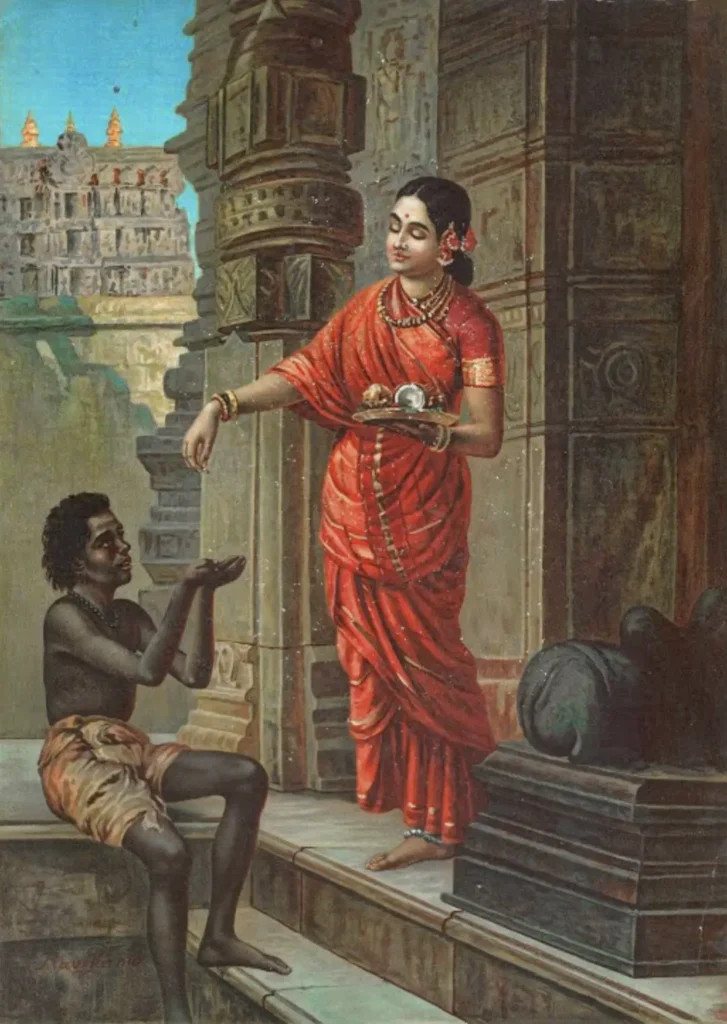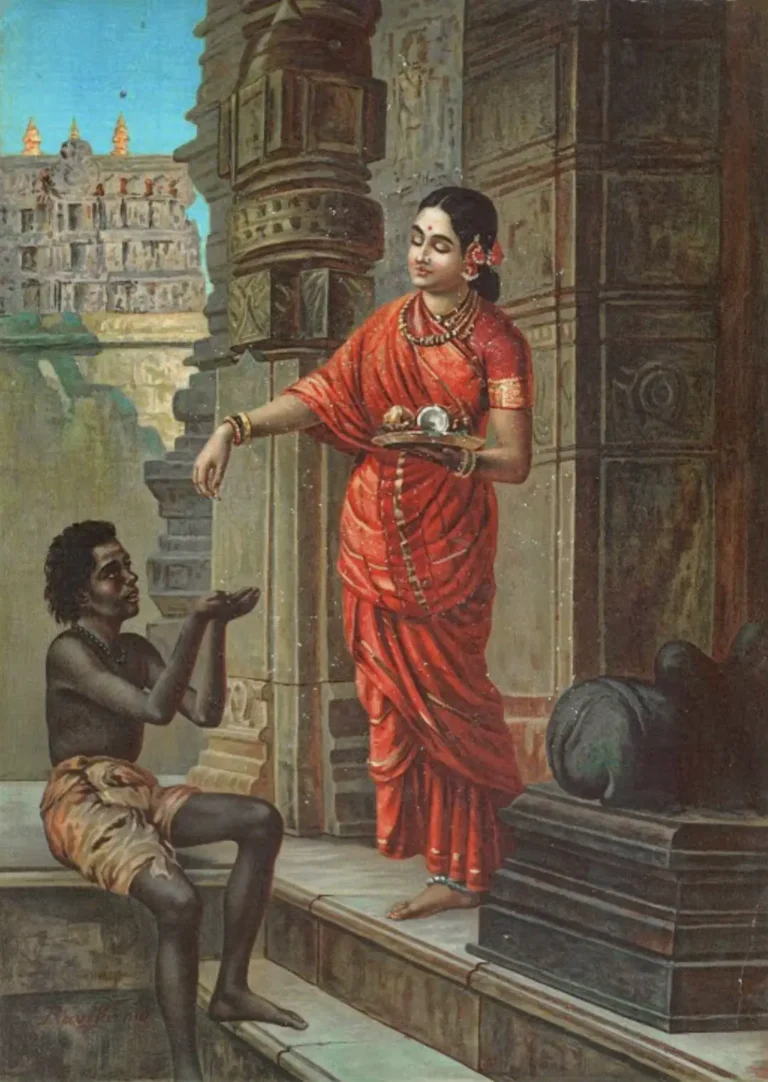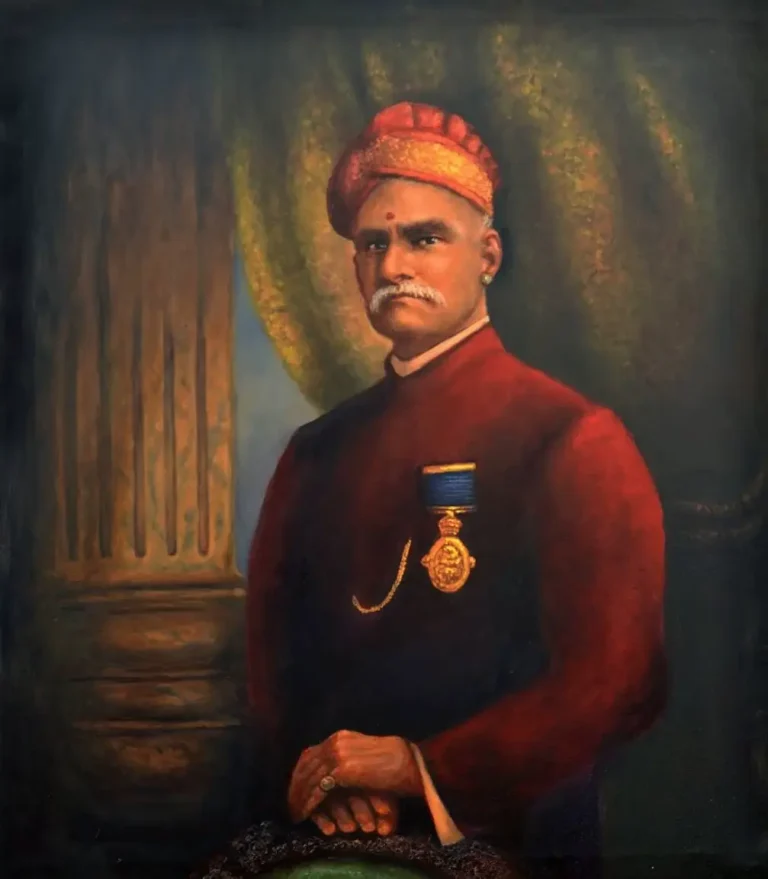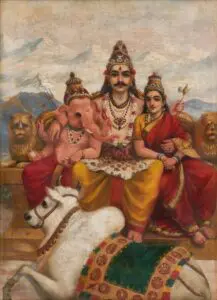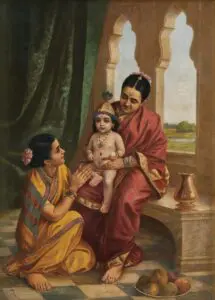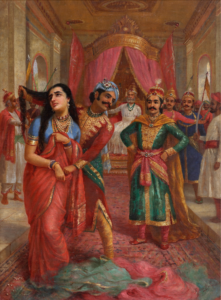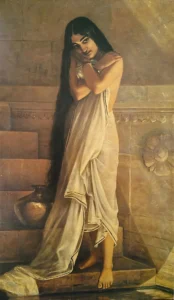Mandodari
This lithograph features Mandodari, the chief wife of Ravana from the Ramayana, depicted in a moment of charity outside a Shiva temple. Clad in a traditional Tamil Brahmin saree, Mandodari exemplifies grace and piety. The artwork underscores her noble character and commitment to virtue, showcasing Raja Ravi Varma’s extraordinary ability to blend mythology with everyday human emotion. This piece reflects not only the artistic brilliance of Varma but also the cultural richness of its time.
Circa 1910
About the Artwork
Did You Know
Liked what you see? Add it to your collection.
Enjoyed reading? Share it.
... continued
Subject and Scene
The painting depicts Mandodari, who is the chief wife of Ravana, the king of Lanka from the Hindu epic Ramayana. In the scene, Mandodari is shown standing in front of a Shiva temple, giving alms to a poor man (or in some descriptions, a poor boy). This act highlights her caring and pious nature.
Medium and Date
The original artwork was created as a lithograph around 1910 by Raja Ravi Varma Press, which was founded by the artist himself.
Description
Mandodari is portrayed as an aristocratic lady, dressed in a traditional Tamil Brahmin saree. The setting of the Shiva temple adds a religious and cultural context to the scene, emphasizing her devotion and charitable spirit.
Original Title
It is worth noting that Raja Ravi Varma did not specifically title this work "Mandodari." Instead, it was based on his painting titled "Lady giving alms," which was later identified as Mandodari by others.




